austria

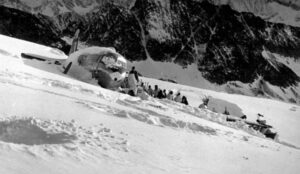 When Switzerland found itself in the middle of an unusual heatwave, the Gauli Glacier melted enough to uncover the wreckage debris of an American World War II plane that crash-landed in the Bernese Alps 72 years ago. Now, when you hear about the crash of a plane, especially into a mountain or in this case, a glacier, you expect to find fatalities. Of course, this plane crashed a long time ago, and the authorities already knew the outcome of that crash. The people who found the plane in the ice, however, might not have. This plane, a C-53 Skytrooper Dakota had been traveling from Austria to Italy when it collided with the Gauli Glacier at an altitude of 10,990 feet on that fateful day.
When Switzerland found itself in the middle of an unusual heatwave, the Gauli Glacier melted enough to uncover the wreckage debris of an American World War II plane that crash-landed in the Bernese Alps 72 years ago. Now, when you hear about the crash of a plane, especially into a mountain or in this case, a glacier, you expect to find fatalities. Of course, this plane crashed a long time ago, and the authorities already knew the outcome of that crash. The people who found the plane in the ice, however, might not have. This plane, a C-53 Skytrooper Dakota had been traveling from Austria to Italy when it collided with the Gauli Glacier at an altitude of 10,990 feet on that fateful day.
It was November 19, 1946, and the plane carrying four crew members and eight passengers were enjoying their trip, when something went terribly wrong. When they hit the glacier, several people were injured, amazingly, there were no fatalities. Among the passengers were high-ranking United States service members traveling with relatives…four women and one 11-year-old girl. Now, they found themselves high up on a glacier, and it was likely very cold. They were stuck at the crash site for six days before rescuers found them and could 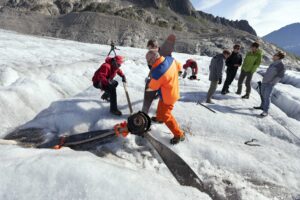
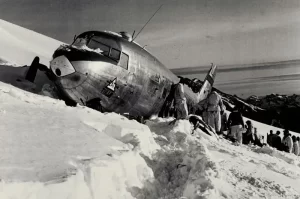 get to them. They were forced to drink snow water and ration chocolate bars to survive, but survive they did. Many times, survival at a crash site, if you survived the initial crash, is all about using common sense and keeping your wits about you. You have to take stock of your supplies and be willing to ration what you have. You can’t let anyone get out of control, because a panic could waste vital supplies. Water is the most vital of the supplies, because while the human body can go weeks without food, it can only live a few days without water. While it would seem that water on a glacier would be plentiful, it may not be so. You would have to chip away at the ice, and then melt it to drink. In addition, you have to get it warm, or you will risk the water causing Hypothermia. This particular group managed to do things right, or at least enough right to survive the six days while they waited for rescue. Once rescued, they went on with their lives feeling very blessed to be alive.
get to them. They were forced to drink snow water and ration chocolate bars to survive, but survive they did. Many times, survival at a crash site, if you survived the initial crash, is all about using common sense and keeping your wits about you. You have to take stock of your supplies and be willing to ration what you have. You can’t let anyone get out of control, because a panic could waste vital supplies. Water is the most vital of the supplies, because while the human body can go weeks without food, it can only live a few days without water. While it would seem that water on a glacier would be plentiful, it may not be so. You would have to chip away at the ice, and then melt it to drink. In addition, you have to get it warm, or you will risk the water causing Hypothermia. This particular group managed to do things right, or at least enough right to survive the six days while they waited for rescue. Once rescued, they went on with their lives feeling very blessed to be alive.
The snow, and later, ice covered the plane as the years went by, and it was very likely forgotten…until 2012 anyway, when three young people discovered the plane’s propeller on the glacier. They continued to observe the emerging plane and as the glacier continued to melt, the scene unfolded. Today, it reportedly looks like a 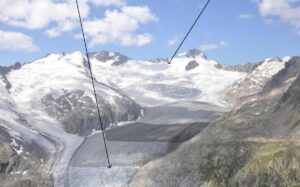
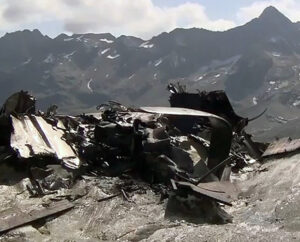 field covered in plane debris, and many people probably wonder how anyone managed to live through the initial crash…much less everyone. As the glacier melted, the plane slid down the mountainside and was expected to finally emerge at the bottom. In fact, much of the debris field might actually be caused by the melting ice.
field covered in plane debris, and many people probably wonder how anyone managed to live through the initial crash…much less everyone. As the glacier melted, the plane slid down the mountainside and was expected to finally emerge at the bottom. In fact, much of the debris field might actually be caused by the melting ice.
 As World War II, was winding down, the Nazis, is typical form were holding high-profile French prisoners of war at Itter Castle in Austria. The Nazis were notorious for their terribly abusive treatment of prisoners. When it became obvious that all was lost, in May 1945, the prison’s guards fled and left Itter Castle waiting for a unit of Waffen-SS police, who were sent in to wipe out the French prisoners and carry out reprisals against the local population for any hints of surrender. It was the Nazi way. When the proof of your war crimes is obvious, remove all evidence, including people, so that no one can tell the gruesome story.
As World War II, was winding down, the Nazis, is typical form were holding high-profile French prisoners of war at Itter Castle in Austria. The Nazis were notorious for their terribly abusive treatment of prisoners. When it became obvious that all was lost, in May 1945, the prison’s guards fled and left Itter Castle waiting for a unit of Waffen-SS police, who were sent in to wipe out the French prisoners and carry out reprisals against the local population for any hints of surrender. It was the Nazi way. When the proof of your war crimes is obvious, remove all evidence, including people, so that no one can tell the gruesome story. 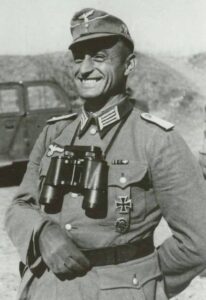
There were, however, some good people in the German Army. One was an officer named Josef “Sepp” Gangl, who opposed the Nazis. Gangl had a small group of men who were loyal to him. Together they intervened to protect the prisoners and locals. Heavily outnumbered, Gangl sent word to the American forces in the area seeking aid. Gangl called for help, and he was answered by Captain John C “Jack” Lee Jr, who arrived with a band of volunteers and a single Sherman tank. It was such a strange group of enemies, who found themselves working together for something that was more important than the war they were in…human lives. Working together were French prisoners, American troops, and Wehrmacht soldiers in an effort to bravely defended the castle against the SS. The French prisoners included former prime ministers, generals, tennis star Jean Borotra, and even Charles de Gaulle’s sister. This,  Operation Cowboy, was one of two known times during the war in which Americans and Germans fought side by side. That is such a shocking turn of events, in fact many called it the strangest battle of World War II. Nevertheless, while the tank was blown up, it that made no difference, and in the end, the SS weren’t able to breach the castle. By late afternoon, an American relief force arrived at Itter Castle and captured the SS unit. In the battle, there was only one casualty on the defending side. Sadly, Gangl was slain by a sniper while trying to spot the position of the anti-tank gun from an observation post. He had given his life so that others might live. It was a brave and heroic act.
Operation Cowboy, was one of two known times during the war in which Americans and Germans fought side by side. That is such a shocking turn of events, in fact many called it the strangest battle of World War II. Nevertheless, while the tank was blown up, it that made no difference, and in the end, the SS weren’t able to breach the castle. By late afternoon, an American relief force arrived at Itter Castle and captured the SS unit. In the battle, there was only one casualty on the defending side. Sadly, Gangl was slain by a sniper while trying to spot the position of the anti-tank gun from an observation post. He had given his life so that others might live. It was a brave and heroic act.
 Switzerland has long been a neutral nation when it comes to wars other conflicts. That hasn’t always been an easy status to accomplish. According to the Hague Convention of 1907, a neutral country means that the country has declared nonparticipation during a war and cannot be counted on to help fight a belligerent country. “Non-belligerent” countries are ones that offer non-combative support in times of war. Countries interpret neutrality differently. Switzerland has what would be called armed neutrality in global affairs. Switzerland is not alone in that status, since Ireland, Austria, and Costa Rica all take similar non-interventionist stances, but Switzerland remains the oldest and most respected.
Switzerland has long been a neutral nation when it comes to wars other conflicts. That hasn’t always been an easy status to accomplish. According to the Hague Convention of 1907, a neutral country means that the country has declared nonparticipation during a war and cannot be counted on to help fight a belligerent country. “Non-belligerent” countries are ones that offer non-combative support in times of war. Countries interpret neutrality differently. Switzerland has what would be called armed neutrality in global affairs. Switzerland is not alone in that status, since Ireland, Austria, and Costa Rica all take similar non-interventionist stances, but Switzerland remains the oldest and most respected.
The desired neutrality in Switzerland started back in 1515, when the Swiss Confederacy suffered a devastating loss to the French at the Battle of Marignano. Apparently, they really lost their taste for war following the defeat, because the Confederacy completely abandoned its expansionist policies and did everything in their power to avoid any future conflict in the interest of self-preservation. No one likes a war, but I don’t think that many nations detest it so much that they would go to such extremes. While the Battle of Marignano began the desire for neutrality, it was the Napoleonic Wars, that truly sealed Switzerland’s place as a neutral nation. Switzerland was invaded by France in 1798 and later made a satellite of Napoleon Bonaparte’s empire, forcing it to compromise its neutrality. With Napoleon’s defeat at Waterloo, the major European powers decided that a neutral Switzerland might actually be a good thing. Given the volatility of the area they decided that Switzerland would serve as a valuable buffer zone between France and Austria and contribute to stability in the region. I’m not sure how they figured that, considering the fact that they would not fight. Nevertheless, during 1815’s Congress of Vienna, they signed a declaration affirming Switzerland’s “perpetual neutrality” within the international community. Switzerland had what it wanted, as did the international community.
Attaining neutrality and keeping it can be two very different things. Nevertheless, Switzerland maintained its impartial stance through World War I, when it mobilized its army and accepted refugees, also still refusing to take sides militarily. The newly formed League of Nations officially recognized Swiss neutrality and established its headquarters in Geneva in 1920. World War II presented a more significant challenge to Swiss neutrality, when the country found itself encircled by the Axis powers. For a country that no longer had a desire to fight, this was a big problem. Switzerland was able, with threats of retaliation, to maintain its independence. Switzerland also continued to trade with Nazi Germany, a decision that later proved controversial after the war ended, and one they most likely regretted.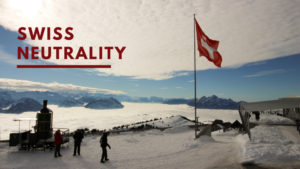
Switzerland has taken a more active role in international affairs by aiding with humanitarian initiatives since World War II, but it fiercely maintains its neutral status with regard to military affairs. Switzerland has never joined the North Atlantic Treaty Organization (NATO) or the European Union, and only joined the United Nations in 2002. Despite its longstanding neutrality, the country still maintains an army for defense purposes and requires part-time military service from all males between the ages of 18 and 34. It always best to be prepared…just in case.
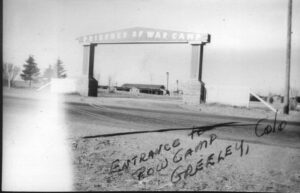 For some reason, when I think of Prisoner of War (POW) camps, I think of a place far away in a war zone, and there were some there, but as they filled up, the prisoners had to be moved to other areas. In addition to that, we needed men to work in the United States because our men were overseas fighting. The prisoners could be put to work in the fields to help grow needed foods for the country, as well as the troops. That idea was a bit foreign to me, especially when I heard that there was just such a camp that was practically in my backyard…even if I wasn’t born at the time. It’s just odd when history collides with your own neighborhood.
For some reason, when I think of Prisoner of War (POW) camps, I think of a place far away in a war zone, and there were some there, but as they filled up, the prisoners had to be moved to other areas. In addition to that, we needed men to work in the United States because our men were overseas fighting. The prisoners could be put to work in the fields to help grow needed foods for the country, as well as the troops. That idea was a bit foreign to me, especially when I heard that there was just such a camp that was practically in my backyard…even if I wasn’t born at the time. It’s just odd when history collides with your own neighborhood.
During World War II, the Greeley, Colorado POW camp had prisoners from Germany and Austria. The camp was built in 1943, and the first prisoners came in 1944. The camp was a self-contained town in itself. It had a fire station, hospital, theater, library, and classrooms. It also had electricity, water, and sewers. The prisoners who were held in the POW camps in the United States were treated well. This country wasn’t into the torture methods that the Axis of Evil nations were.

Many of the prisoners worked in the fields and paid money, for their labor, to take home with them. They were also given the chance to have fun. They had soccer teams. They dyed their t-shirts different colors using homemade dyes from vegetables. They had classes in English, German, and Mathematics. Some men were in the camp orchestra and others sang in choir. In many ways, the lives these men lived in the POW camps was better than the lives they lived at home…or at least during the war.
The Greeley POW Camp 202, was almost like a coveted assignment. It was the place the prisoners wanted to be sent. When new prisoners came to the camp, they would try to find men from their hometowns…hoping others had been as blessed as they felt to be there. The story is told that, “The old prisoners would toss out gum or paper with their names and address. One day a father and son found each other from the tossed notes.” These reunions were such a blessing for the prisoners. The guards were well liked. In fact, when one of the guards got married, the prisoners cooked their wedding night dinner for them. These good guards found favor with the prisoners.

I like to think that POW camps in and run by the United States were and are more civilized than those camps owned and run by other countries, but I don’t suppose all of them were run as compassionately as the Greeley POW Camp. We hear nightmare stories of Guantanamo Bay, and I’m sure there are others that weren’t so great. Still, I suppose things depend on the prisoners to a great degree. It is harder to show kindness to a prisoner who orchestrates a terrorist attack against our nation, killing thousands of innocent people, that it is to be compassionate to a soldier who is simply following orders, but is otherwise a kind and gentle person.
 Imagine being forced to take action against your own business. Most of us couldn’t even begin to comprehend what could possibly bring about such an event, but it has happened in the past…unbelievably. On April 23, 1938, before the main Holocaust took place, but leading up to it for sure, Austria’s 200,000 Jews were thrown into a state of panic. The Nazi anti-Semitic movement was gaining momentum, the Hitler Youth were becoming more and more emboldened at the urging of their evil leader. Demonstrations were held, in front of the Jewish shops, and more often that not, the Jewish shopkeeper was forced to carry a sign and actually picket their own shops.
Imagine being forced to take action against your own business. Most of us couldn’t even begin to comprehend what could possibly bring about such an event, but it has happened in the past…unbelievably. On April 23, 1938, before the main Holocaust took place, but leading up to it for sure, Austria’s 200,000 Jews were thrown into a state of panic. The Nazi anti-Semitic movement was gaining momentum, the Hitler Youth were becoming more and more emboldened at the urging of their evil leader. Demonstrations were held, in front of the Jewish shops, and more often that not, the Jewish shopkeeper was forced to carry a sign and actually picket their own shops.
The situation was alarming to the Jews, as they recalled that Chancellor Adolf Hitler’s so-called “Easter Peace” was to end on April 24th. Many of the German police had been gone since Friday and all but a few German troops were scheduled to leave soon. That might have seemed like a good thing to most of us, but the Jews knew better. They expected to find the situation in Austria more completely under the control of Austrian anti-Semites who were filled with hate for the Jews. So much had changed since the March 12, 1938, when the Nazis annexed Austria. The Jewish people had been transformed from successful business people and respected citizens, to being considered less than human.
While no mention of the boycott and forced picketing appeared in newspapers, who talked only about the need to infuse a “fresh spirit” into the anti-Jewish drive, the audacity of what took place was something far more sinister than the innocent sounding call to action. This could have easily been the beginning of the horrific event known to most of us as The Holocaust. Hitler encouraged the Nazis saying, “With the Easter peace over, Jewish agitators must look forward to meeting in person that typically German personage who dons evening dress when the time comes to wield the axe.” I did not know this, but German executioners wore evening dress for beheadings…like it was a big celebration.

Any Jewish business was a target…not just in Austria and Germany, but Hitler’s poisonous rhetoric spilled over to other countries as well. Even countries who didn’t really hate the Jewish people turned against the Jewish people…mostly because they were afraid of the consequences they could face by being empathetic with the Jewish people. The humiliation poured out on the Jewish people from all directions was appalling, and criminal. And the idea of forcing them to picket in front of their own business…against their own business, is despicable. The audacity of such an act is only topped by the further cruel acts that were carried out on these same people.
 One of the criminal acts of Hitler and the Third Reich was to confiscate the riches of the countries they were occupying. It was not the worst of the atrocities, but it was up there. By confiscating the food and money of these countries, the Nazis left the people in those countries broke and starving. Even as the Third Reich began to know they were losing the war, there was hope that they would go into hiding, re-group, and rise again. If that was going to happen, they were going to need money, and the only way to insure that was to begin mass confiscation and hiding of the riches of these nations.
One of the criminal acts of Hitler and the Third Reich was to confiscate the riches of the countries they were occupying. It was not the worst of the atrocities, but it was up there. By confiscating the food and money of these countries, the Nazis left the people in those countries broke and starving. Even as the Third Reich began to know they were losing the war, there was hope that they would go into hiding, re-group, and rise again. If that was going to happen, they were going to need money, and the only way to insure that was to begin mass confiscation and hiding of the riches of these nations.
Lake Toplitz was located in a very remote area of Austria, southeast of Salzburg. In modern day Austria, the area is appropriately called The Dead Mountains. Basically, if you’re looking for somewhere to get away from it all, Lake Toplitz is a good choice. During the war, the lake’s remoteness made it the perfect place for the Nazis to test weapons…including torpedoes. It was also one of the places the Nazi elite fled to when it came time to make their last stand. That fact, in and of itself, makes it a logical place to hide funds for a future comeback of the Third Reich.
In 1945, Hitler’s Germany had only a few more weeks before their horrific reign ended, found themselves stuck in the middle, being crushed by the Russian tanks coming in from the east, and the Americans and British from the north. As their fronts collapsed, the Nazis made several efforts to hide their stolen wealth and treasure. The practice of hiding the wealth is well known, because a lot of that hidden wealth has already been discovered in mines, underground bunkers, and hastily buried fortifications.
Everyone seemed to be looking for the buried treasure left by the Nazis. At one time, a pair of treasure hunters announced they found the location of a buried German armored train in the hills of Poland. Their claim seemed 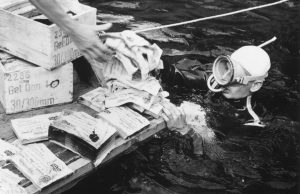 possible, so a search was held. In the end, it was determined that the “train” was nothing more than an ice covered rock formation. Still, the possibility of a treasure train is very real. Unfortunately, the big news about the “train” caused such a stir that another find was all but lost to the world.
possible, so a search was held. In the end, it was determined that the “train” was nothing more than an ice covered rock formation. Still, the possibility of a treasure train is very real. Unfortunately, the big news about the “train” caused such a stir that another find was all but lost to the world.
There had been stories about plunder the Nazis may have hidden in the cold, deep waters of Lake Toplitz, as the Allies closed in. Reports came out that the lake held iron boxes full of counterfeit British currency and the printing plates to make more…a part of Hitler’s Operation Bernhard, which was a plan to wreck the British economy by flooding the world with fake bank notes. That report turned out to be true, when dive crews recovered several chests stuffed with counterfeit cash in 1959. The divers reported there were more chests stuck in the mud, but they were too deep to recover. More stories about Nazi plunder at the bottom of Lake Toplitz surfaced. The nephew of one German officer made the claim that the Nazis sank chests loaded with gold into the lake. Plates from the lost fabled Russian Imperial Amber Room, which had also been rumored to be on the Nazi gold train in Poland, are also thought by others to be on the bottom of the icy lake. Along with treasure there are stories of weapons components, ammunition, rocket fuel, and maps showing the locations of even more stolen Nazi loot.
There have been many attempts to salvage treasure from the bottom of the lake over the years, with most of them ending in death. The lake is deep and cold, and has many tangled trees and branches that can trap a person. In 1983 the Austrian government declared the lake had been completely searched and anything of value removed. That turned out to be a fake story designed to discourage treasure hunters. Biologists studying the lake have turned up more boxes of counterfeit currency, rocket parts, weapons, mines and even a torpedo 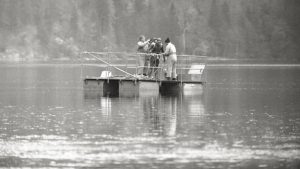 since the government report. Later, photographs from a submerged bunker surfaced, showing boxes with Cyrillic lettering. These are what led to the speculation that the boxes might contain panels from the Amber Room. The exact location of the bunker has been hidden from the public.
since the government report. Later, photographs from a submerged bunker surfaced, showing boxes with Cyrillic lettering. These are what led to the speculation that the boxes might contain panels from the Amber Room. The exact location of the bunker has been hidden from the public.
I expect that people will continue to try to find the treasures, even though claims will most likely be laid upon them immediately after they are located. The people who find them will probably only get the recognition for the find, rather than the right to keep the treasure. Maybe with an attorney who is good enough, they will walk away with a finders fee.

 The process of trying to end a war and bring peace between nations is a tricky one, and one that can end up being highly volatile, or even explode into further fighting!! The world was in the midst of World War I, and an armistice had been signed between Russia and Germany. The Soviet government had requested peace negotiations on Nov. 8, 1917. They began on December 22, 1917, nearly three weeks after a ceasefire was declared on the Eastern Front. Representatives of the two countries began peace negotiations at Brest-Litovsk, near the Polish border in what is now the city of Brest, in Belarus. They were divided into several sessions. During this time, the Soviet delegation tried to prolong the proceedings, so they could take full advantage of the opportunity to issue propaganda statements. Meanwhile, the Germans grew increasingly impatient with the delays.
The process of trying to end a war and bring peace between nations is a tricky one, and one that can end up being highly volatile, or even explode into further fighting!! The world was in the midst of World War I, and an armistice had been signed between Russia and Germany. The Soviet government had requested peace negotiations on Nov. 8, 1917. They began on December 22, 1917, nearly three weeks after a ceasefire was declared on the Eastern Front. Representatives of the two countries began peace negotiations at Brest-Litovsk, near the Polish border in what is now the city of Brest, in Belarus. They were divided into several sessions. During this time, the Soviet delegation tried to prolong the proceedings, so they could take full advantage of the opportunity to issue propaganda statements. Meanwhile, the Germans grew increasingly impatient with the delays.
The leader of the Russian delegation was Leon Trotsky, the Bolshevik People’s Commissar for Foreign Relations. Max Hoffmann, the commander of German forces on the Eastern Front, served as one of the chief negotiators on the German side. The main difference of opinion in Brest-Litovsk was over the surrender of Russian land to the Germans. The Russians demanded a peace agreement without annexations or indemnities and the Germans were unwilling to concede on this point. In February 1918, Trotsky announced he was withdrawing the Russians from the peace talks, and the war was on again. This would turn out to be one of the biggest, if no the biggest mistake of his career.
With the renewal of fighting, the Central Powers quickly took the upper hand. In a way, it was Russia against the world, and Russia was not likely to win that one. The Central Powers quickly seized control of most of Ukraine and Belarus. The Bolshevik hope that the workers of Germany and Austria, offended by their governments’ obvious territorial ambition, would rise up in rebellion in the name of the international working class people, soon vanished. Russia was fighting a losing battle, and they would have to surrender in the end.
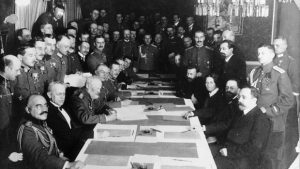
The end came on March 3, 1918, when Russia accepted peace terms that were even more harsh than those originally suggested by Germany. Russia would lose Poland, Lithuania, and the Baltic states of Estonia, Livonia, and Courland to Germany. To further devastate Russia’s hopes, Finland and the Ukraine saw Russia’s weakness as an opportunity to declare their independence. In all, Brest-Litovsk deprived Lenin’s new state of one million square miles of territory and one-third of its population, about 55 million people. Sometimes, it’s better to settle, rather than risk a loss far more devastating.

 When we think of a series of disasters, it is usually tornadoes, earthquakes, or floods that come to mind. On February 11, 1952, none of the usual suspects were at fault in the series of disasters that began across central Europe. Snow storms don’t normally fall into the category of a series of disasters, but when a storm stalled over middle Europe during the first week of February of 1952, it dumped two feet of snow in parts of France, Austria, Switzerland, and Germany. In the vast area of middle Europe, life quickly ground to a standstill. Everything was closed, and travel was impossible. Germany recruited thousands of people and their shovels in an attempt to make the streets passable. In France several people died when their roofs collapsed under the weight of the heavy snow accumulation.
When we think of a series of disasters, it is usually tornadoes, earthquakes, or floods that come to mind. On February 11, 1952, none of the usual suspects were at fault in the series of disasters that began across central Europe. Snow storms don’t normally fall into the category of a series of disasters, but when a storm stalled over middle Europe during the first week of February of 1952, it dumped two feet of snow in parts of France, Austria, Switzerland, and Germany. In the vast area of middle Europe, life quickly ground to a standstill. Everything was closed, and travel was impossible. Germany recruited thousands of people and their shovels in an attempt to make the streets passable. In France several people died when their roofs collapsed under the weight of the heavy snow accumulation.
The worst of the storm, however, was felt in Austria, when a series od deadly avalanches took a heavy death toll. It was during the early hours of February 11, 1952, at a ski resort in Melkoede, when a huge mass of the newly fallen snow suddenly crashed down the mountain from above. There was no time to react, and no time to get away. They were trapped. Fifty people were sleeping at the resort. Twenty of them, mostly German tourists were killed, and another ten were seriously injured. In Switzerland and Austria, authorities issued urgent warnings about potential avalanches and some villages were actually evacuated. Nevertheless, all that was not enough. The next day there were more damaging avalanches. In Isenthal, Switzerland, hundreds of cattle and several barns were buried by an avalanche. In Leutasche, Austria, a twelve year old child was saved by people who risked their own lives in the face of a second avalanche that was poised to fall. Seven members of the child’s family were killed by the avalanche.
Avalanches kill more than 150 people worldwide each year. Most are snowmobilers, skiers, and snowboarders, and most deadly avalanches are triggered by the victim or someone in their party. Given that count, I suppose that the 78 people who perished in the February avalanches in middle Europe in 1952, might seem like a small number, but when you consider that these deaths occurred over a period of a few days, and the rest of the deaths by avalanches from that year were not included in that number, the death toll is staggering. This was not the worst avalanche death toll, however. That record, if it is right to call it such, goes to the Huascarán avalanche that was triggered by the 1970 Ancash earthquake in Peru. On 31 May 1970, the Ancash earthquake caused a substantial part of the north side of the mountain to collapse. The avalanche mass, an 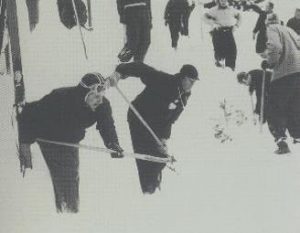
 estimated 80 million cubic feet of ice, mud and rock, was about half a mile wide and a mile long. It advanced about 11 miles at an average speed of 175 to 200 miles per hour, burying the towns of Yungay and Ranrahirca under ice and rock, killing more than 20,000 people. This avalanche, in my estimation, might have been more of a landslide than an avalanche, and so it’s very possible that all of these people would have died had there been snow or not.
estimated 80 million cubic feet of ice, mud and rock, was about half a mile wide and a mile long. It advanced about 11 miles at an average speed of 175 to 200 miles per hour, burying the towns of Yungay and Ranrahirca under ice and rock, killing more than 20,000 people. This avalanche, in my estimation, might have been more of a landslide than an avalanche, and so it’s very possible that all of these people would have died had there been snow or not.
 While people might not know that today, October 14 was the day that Air Force test pilot, Chuck Yeager became the first person to break the sound barrier, many do know that it was Chuck Yeager who accomplished that feat. That was back in 1947, and it was an amazing accomplishment in speed flying…an activity common to test pilots, though not always safe or successful, and sometimes deadly. There was also another record that was broken on this day, but this one was back in 2012.
While people might not know that today, October 14 was the day that Air Force test pilot, Chuck Yeager became the first person to break the sound barrier, many do know that it was Chuck Yeager who accomplished that feat. That was back in 1947, and it was an amazing accomplishment in speed flying…an activity common to test pilots, though not always safe or successful, and sometimes deadly. There was also another record that was broken on this day, but this one was back in 2012.
Felix Baumgartner was born in Salzburg, Austria in 1969, and he started skydiving when he was 16 years old. He was also a paratrooper during his time in the Austrian Army. After his time in the Army, Felix decided that he needed that kind of excitement in his life, and so he went on to perform a series of daredevil feats, including becoming the first person to jump from one of the twin 1,483 foot high Petronas Towers in Kuala Lumpur, then the world’s tallest buildings, in 1999, and becoming the first person to skydive across the English Channel using a carbon-fiber wing, in 2003. His next record breaking jump was going to be his greatest feat, however, and it was five years in the making. It also involved a team of engineers, scientists, and aeronautic experts to custom design his equipment, including his pressurized space suit (intended to prevent his blood from boiling at high altitudes) and 6 foot wide, 2,900 pound, pressurized capsule. I’m sure that by now you are wondering why he would need such equipment, but I  assure you that he did. In 2010 the project, which was financed by energy drink company Red Bull, hit a roadblock when Baumgartner started having panic attacks while undergoing endurance tests in his pressurized suit and helmet. A sports psychologist eventually helped him learn to cope with his claustrophobia. I find it amazing that a dare devil would have such a problem as claustrophobia, but remember that he was a sky diver, so he was used to wide open spaces. This project required that he have a capsule that was attached to a helium balloon to take Baumgartner to an incredible height of 24 miles above the Earth.
assure you that he did. In 2010 the project, which was financed by energy drink company Red Bull, hit a roadblock when Baumgartner started having panic attacks while undergoing endurance tests in his pressurized suit and helmet. A sports psychologist eventually helped him learn to cope with his claustrophobia. I find it amazing that a dare devil would have such a problem as claustrophobia, but remember that he was a sky diver, so he was used to wide open spaces. This project required that he have a capsule that was attached to a helium balloon to take Baumgartner to an incredible height of 24 miles above the Earth.
At this point, I’m sure you are curious about the planned jump. On that morning, October 14, 2012, a 550 foot high helium balloon made of 40 acres of ultrathin plastic lifted the capsule carrying Baumgartner, nicknamed Fearless Felix by the crew at the launch site at Roswell International Air Center. He was going to jump from the capsule  at 127,852.4 feet and plunge to Earth. It would be the highest distance anyone had ever skydived from, and it would take nine minutes and eighteen seconds, of which four minutes and twenty seconds would be free fall…without an opened parachute…during which time he fell 119,431 feet. The prior record for high altitude skydiving was held by Joseph Kittinger, who jumped from an altitude of 102,800 feet in 1960. Kittinger was a former Air Force colonel, and was part of the team that helped prepare Baumgartner for his record breaking jump. Baumgartner’s top speed during that free fall was 843.6 miles per hour, or Mach 1.25, making Fearless Felix not only the record holder for the highest skydive, but now he was also the first person to break the sound barrier without the protection or propulsion of a vehicle. The capsule was equipped with cameras, to record the event, which was broadcast on the internet and on television, so it could be witnessed by millions of people world wide. After the jump, Fearless Felix landed safely in the desert near Roswell, New Mexico.
at 127,852.4 feet and plunge to Earth. It would be the highest distance anyone had ever skydived from, and it would take nine minutes and eighteen seconds, of which four minutes and twenty seconds would be free fall…without an opened parachute…during which time he fell 119,431 feet. The prior record for high altitude skydiving was held by Joseph Kittinger, who jumped from an altitude of 102,800 feet in 1960. Kittinger was a former Air Force colonel, and was part of the team that helped prepare Baumgartner for his record breaking jump. Baumgartner’s top speed during that free fall was 843.6 miles per hour, or Mach 1.25, making Fearless Felix not only the record holder for the highest skydive, but now he was also the first person to break the sound barrier without the protection or propulsion of a vehicle. The capsule was equipped with cameras, to record the event, which was broadcast on the internet and on television, so it could be witnessed by millions of people world wide. After the jump, Fearless Felix landed safely in the desert near Roswell, New Mexico.

 My sister, Cheryl Masterson has collected post cards for a long time. For some people, I suppose that might see an odd thing to collect, but when you think about it, they are easy to store and to look back on, and they instantly give you a picture of the place you are visiting, and usually it is a better picture that you could take yourself. Of course, these days, with digital cameras, we can take pretty good pictures, but it isn’t easy to print and mail them. Then again, we have to ability to upload them to Facebook, Twitter, and email, so most of us probably wouldn’t mail them anyway. Nevertheless, just about every gift shop you come across has post cards, and they seem to sell pretty quickly.
My sister, Cheryl Masterson has collected post cards for a long time. For some people, I suppose that might see an odd thing to collect, but when you think about it, they are easy to store and to look back on, and they instantly give you a picture of the place you are visiting, and usually it is a better picture that you could take yourself. Of course, these days, with digital cameras, we can take pretty good pictures, but it isn’t easy to print and mail them. Then again, we have to ability to upload them to Facebook, Twitter, and email, so most of us probably wouldn’t mail them anyway. Nevertheless, just about every gift shop you come across has post cards, and they seem to sell pretty quickly.
Post cards first made their appearance in Austria on this day, October 1, 1869. They were the world’s first postcards, and I’m sure that no one would have ever guessed what an impact they would have on the world. They weren’t something to improve national security, or improve the quality of life, or really to do anything special, other than to allow the purchaser to send a quick note to their family back home to show them what they were doing on their vacation. Nevertheless, they were new and fun.
As I look through old family pictures from my family and from Bob’s, I have come across a number of postcards that were sent or received, that the family found interesting enough to save for all these years. I always wondered why they would want to save those post cards and even put them in photo albums, but when you consider that they were still relatively new at the time, I guess it makes sense.
I feel very blessed to have not only the post cards now, but the writing that was on the ones that were sent to someone. It gives you not only a feel for the times, but also for what they were doing at the time. Our families clear back to the 1800s lived in a time when people were moving around a lot, both to move and to vacation…not unlike today, I guess. We are a people who loves to see the things our world has to offer, and then we like to have a little souvenier of our time spent there. I know that when Bob and I traveled to Seattle, Washington, I came back with tons of pictures, and several souveniers. It is just the way we do things.
I think that whoever came up with idea to start taking some of the great pictures people took and putting them 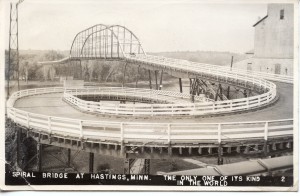
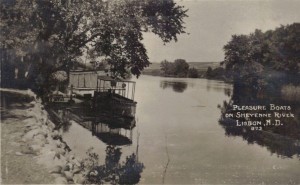 on a card that other people could enjoy and send to family, really had a great idea. And it is my guess that they made a lot of money for their great idea. For my sister Cheryl, they have been a great source of joy. She can have all the great pictures, even if she is not able to get to the exact same place to take them. For me, I guess, I would rather go get the pictures myself, but not everybody can do that, so post cards are a great souvenier to have.
on a card that other people could enjoy and send to family, really had a great idea. And it is my guess that they made a lot of money for their great idea. For my sister Cheryl, they have been a great source of joy. She can have all the great pictures, even if she is not able to get to the exact same place to take them. For me, I guess, I would rather go get the pictures myself, but not everybody can do that, so post cards are a great souvenier to have.

